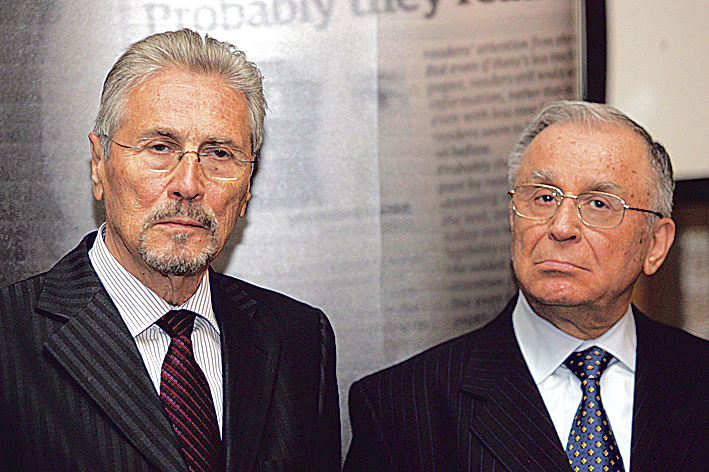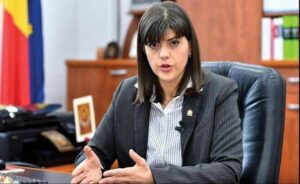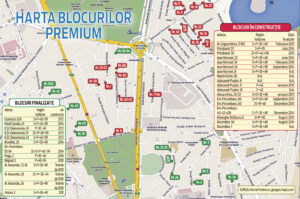According to the Constitution, the president’s task is rather taking care of the national security and representing the country at international level. The head of state is also supposed to be a mediator between the government’s powers and to issue medals or pardons. But, taking into account he also appoints the prime minister, approves minister replacements and promulgates all the laws (which he can also send back to the Parliament if he believes they are not fair) and that he is allowed to chairman the cabinet’s meetings, the presidential job is not at all ornamental. And as almost every time the president and the prime minister came from the same political group, most probably the head of state knew and approved most economic decisions made by the government. The president succeeded to inform the public, one way or another, if the cabinet played a lone hand.
Ion Iliescu (1990-1992)
Iliescu’s first term could be described in economic terms as a slow passage from the planned market to an incipient market economy. The private companies and the foreign investments were authorised, the state enterprises became registered companies, over 80% of the farm land was handed to private owners and the prices were liberalised. In August 1991, the Parliament passed a law preparing the privatisation of the state-owned companies.
It seems the changes (most of them initiated by the young Prime Minister Petre Roman) were seen as happening too quickly by the conservative wing of the National Salvation Front. After the September 1991 miners’ riot, the cabinet fell and the planned reforms (including the national currency’s convertibility) were postponed or cancelled.
Ion Iliescu (1992-1996)
The former communist leader’s second term meant for the economy small and very small steps towards a real market economy. Some members of the government during that time said the Prime Minister Nicolae Vacaroiu was in fact just a docile implementer of the conservative line Iliescu and his group imposed. However, the effects of the mass privatisation or MEBO privatisation programs can’t be overlooked.
The 1992-1996 economic indicators had rather contradictory evolutions: the GDP initially increased after the 1992 drop, but then the grew stopped in the last two years of the term (the same happened to the exports or to the average salary), the budget deficit shrank and the foreign exchange reserves grew (from 80 million USD in 1992 to 750 million USD in 1996; currently they amount over 39 billion USD). In the meantime, the inflation rate amounted to almost 400% in 1993-1994, decreasing to “only” 35% per year in 1995 and 1996. It’s hard not to mention that during the same period the state-owned bank Bancorex collapsed under the burden of the non-performing loans it issued or that huge amounts of money were paid as subsidies to almost bankrupt state-owned companies.
Emil Constantinescu (1996-2000)
The three centre-right cabinets that ruled Romania during Constatinescu’s term (Victor Ciorbea – December 1996-April 1998, Radu Vasile – April 1998-December 1999 and Mugur Isarescu – December 1999-December 2000) were supported by the president in their attempt to fulfil as many of the promises he made during the elections campaign.
Important measures were taken in the beginning (the privatisation process was sped up, the prices and the exchange rate were completely liberalised, and the public companies –especially those in the mining sector- were restructured). But the conflicts taking place inside the ruling coalition and also the powerful social movements (which reached a climax in 1999 when the miners’ riots threatened to overthrow the government) put a brake on the reforms. So that in 2000 Emil Constantinescu exited the scene politically defeated, leaving behind a society and economy still insufficiently modernised.
Ion Iliescu (2000-2004)
The social-democrat leader’s third and last term was more like dominated by the Prime Minister Adrian Nastase, whose influence over the left-wing party grew significantly. It’s not clear if Ion Iliescu was still able to impose his economic views or not. What we know is that during those four years the GDP and the revenues constantly increased, the inflation rate shrank, Romania attracted more foreign investments and the number of privatizations augmented. However, the government kept on subsidizing the economic “black holes” and the corruption level seems to have grown.
Traian Basescu (2004-2009)
The first five-year term of a Romanian president began with a close relationship between the head of state and the Prime Minister Calin Popescu Tariceanu. The first two years brought some positive measures for the economy, the most important being the flat tax rate. When Basescu and Tariceanu didn’t get along anymore, more and more government decisions were taken without presidential approval. The head of state openly criticized the way the electricity deals took place or the postponement of the decentralization process and didn’t agree with the so-called “vice tax” or with the vehicle registration tax. In the summer of 2007 Basescu opposed raising pensions, as he didn’t think the government proposal would be financially sustainable, but in the fall of 2008 he supported increasing the teachers’ salaries by 50% (a measure that Tariceanu didn’t back).
If the four years of the cabinet led by the National Liberal Party leader overlapped the biggest economic growth in Romania’s recent history, 2009 (the year when Romania was ruled by a Democrat Liberal-Social Democrat coalition under the Prime Minister Emil Boc) coincided with the start of the economic crisis. The divergences between the two parties, but also the incoming presidential elections deterred the government from taking almost any anti-crisis measures.
Traian Basescu (2009-2014)
Only after winning his second term and configuring a new ruling coalition having the Democrat Liberals as main party, Traian Basescu was able to play once again an important role in the economic sector. It’s known that his influence over the government allowed passing unpopular anti-crisis decisions, such as cutting salaries and pensions (the last one was replaced, as result of the Constitutional Court’s opposition, with increasing the VAT). Tightening the belt and assigning money to public investments seem to have come to fruition: after two years of recession (2009-2010), the economy started to grow again in 2011 and kept the rhythm until 2013.
Nevertheless, Romania recently fell again into recession and most experts believe it’s the left-wing cabinet’s fault. The Prime Minister Victor Ponta came to power in May 2012 and since then the President had no more influence over the government, who was pointed at for introducing new taxes or raising the old ones. The cabinet was also criticized for decreasing the amounts allocated to public infrastructure in order to raise salaries and pensions and not to miss the budget deficit target at the same time.






